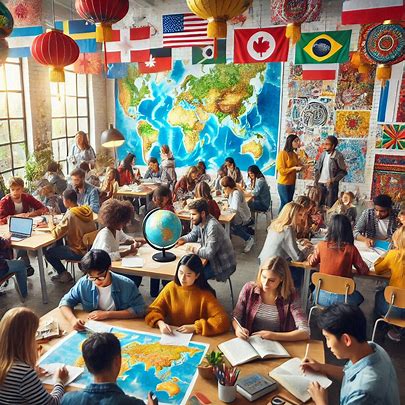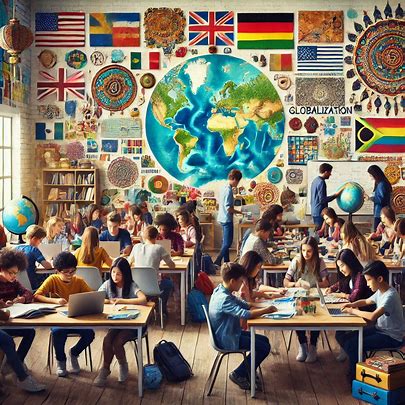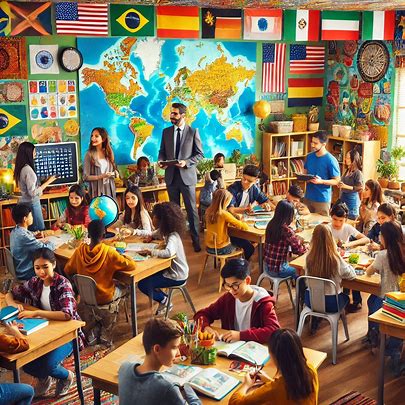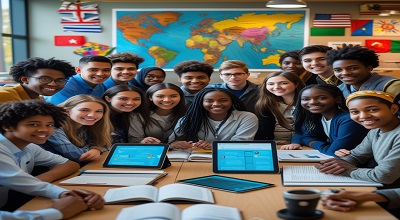Globalization in Classrooms
Globalization is a multifaceted phenomenon that has significantly influenced various aspects of society, including education. In classrooms around the world, the integration of global perspectives is becoming increasingly important. This article explores the latest trends and practices in globalization within educational settings, highlighting its impact on students, teachers, and the overall learning environment.
Understanding Globalization
What is Globalization?
Globalization refers to the increasing interconnectedness and interdependence of world cultures and economies. It encompasses the integration of people, companies, and governments on a global scale, facilitating the exchange of ideas, goods, and services across borders. This process has profound implications for education, as it shapes the way students learn about the world and their place within it.
The Role of Technology in Globalization
Technological advancements have been a driving force behind globalization. The rise of the internet and digital communication has made it easier for information to flow across borders, allowing students to access a wealth of resources and perspectives from around the globe. This technological integration in classrooms not only enhances learning but also prepares students for a globalized workforce.

The Impact of Globalization on Education
Curriculum Development
Globalization has prompted educators to rethink traditional curricula. Schools are increasingly incorporating global issues into their lesson plans, encouraging students to engage with topics such as climate change, cultural diversity, and international relations. This shift helps students develop a more comprehensive understanding of the world and fosters critical thinking skills.
Cultural Awareness and Sensitivity
One of the key benefits of globalization in education is the promotion of cultural awareness. By exposing students to diverse cultures and perspectives, educators can help them develop empathy and respect for others. This cultural sensitivity is essential in today’s interconnected world, where collaboration across cultures is often necessary.
Collaborative Learning Opportunities
Globalization has also facilitated collaborative learning opportunities. Students can now participate in international projects, virtual exchanges, and cross-cultural collaborations, allowing them to work with peers from different countries. These experiences not only enhance their learning but also build essential skills such as teamwork and communication.

Strategies for Implementing Globalization in Classrooms
Integrating Global Issues into Lessons
Educators can incorporate global issues into their lessons by using real-world examples and case studies. For instance, discussing the impact of globalization on local economies or exploring global health challenges can make learning more relevant and engaging for students.
Utilizing Technology for Global Connections
Teachers can leverage technology to connect with classrooms around the world. Platforms such as video conferencing tools and collaborative online projects enable students to interact with their peers globally, fostering a sense of community and shared learning.
Encouraging Critical Thinking
Globalization presents complex challenges that require critical thinking skills. Educators should encourage students to analyze different perspectives and consider the implications of global issues. This approach not only enhances their understanding but also prepares them to be informed global citizens.

Challenges of Globalization in Education
Equity and Access
While globalization offers numerous benefits, it also presents challenges, particularly regarding equity and access to resources. Not all students have equal access to technology or global learning opportunities, which can exacerbate existing inequalities in education.
Cultural Homogenization
Another concern is the potential for cultural homogenization, where local cultures may be overshadowed by dominant global cultures. Educators must strive to balance global perspectives with local contexts, ensuring that students appreciate their own cultural heritage while engaging with global issues.
The Future of Globalization in Education
Emphasizing Sustainability
As the world faces pressing challenges such as climate change and social inequality, the future of globalization in education will likely emphasize sustainability. Educators will need to prepare students to think critically about these issues and develop solutions that promote inclusive and sustainable development.
Lifelong Learning
Globalization necessitates a shift towards lifelong learning. As the world continues to evolve, students must be equipped with the skills to adapt and learn throughout their lives. This approach will be crucial in preparing them for the dynamic nature of the global workforce.

Conclusion
Globalization in classrooms is not just a trend; it is a necessary evolution in education that prepares students for a complex and interconnected world. By embracing global perspectives, educators can foster cultural awareness, critical thinking, and collaboration among students. As we move forward, it is essential to address the challenges of globalization while maximizing its benefits to create a more inclusive and equitable educational landscape.
FAQs
1. What is globalization in education?
Globalization in education refers to the integration of global perspectives and issues into the curriculum, promoting cultural awareness and collaboration among students from different backgrounds.
2. How does technology facilitate globalization in classrooms?
Technology enables students to access information from around the world, participate in virtual exchanges, and collaborate on international projects, enhancing their learning experiences.
3. What are the benefits of globalization in education?
Benefits include increased cultural awareness, enhanced critical thinking skills, and opportunities for collaborative learning, preparing students for a globalized workforce.
4. What challenges does globalization pose for education?
Challenges include issues of equity and access to resources, as well as the risk of cultural homogenization, where local cultures may be overshadowed by dominant global cultures.
5. How can educators incorporate global issues into their lessons?
Educators can use real-world examples, case studies, and collaborative projects to engage students with global issues and encourage critical thinking.
6. Why is cultural awareness important in education?
Cultural awareness fosters empathy and respect for diverse perspectives, which is essential in today’s interconnected world where collaboration across cultures is often necessary.
7. What is the future of globalization in education?
The future will likely emphasize sustainability and lifelong learning, equipping students with the skills to adapt to a rapidly changing global landscape.

